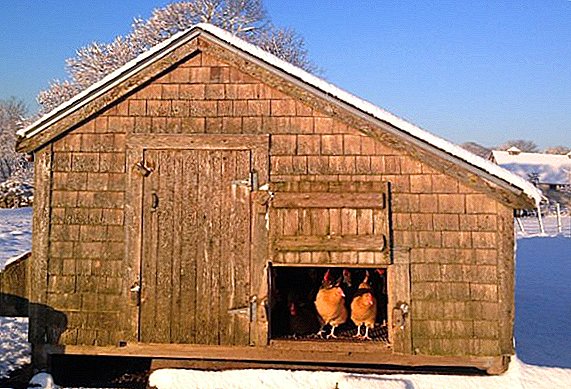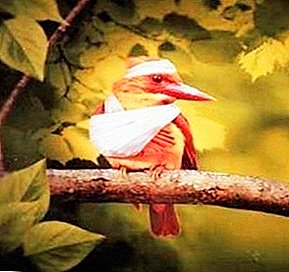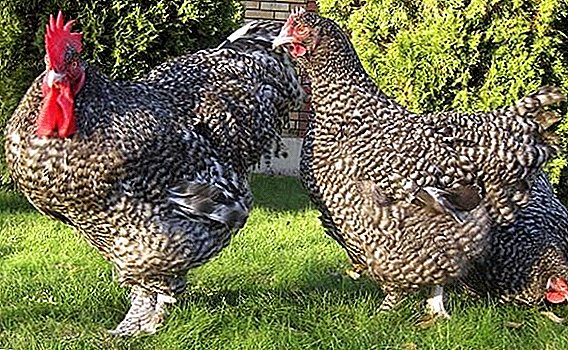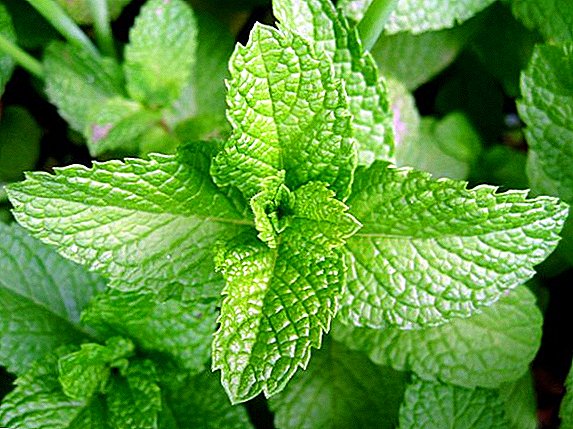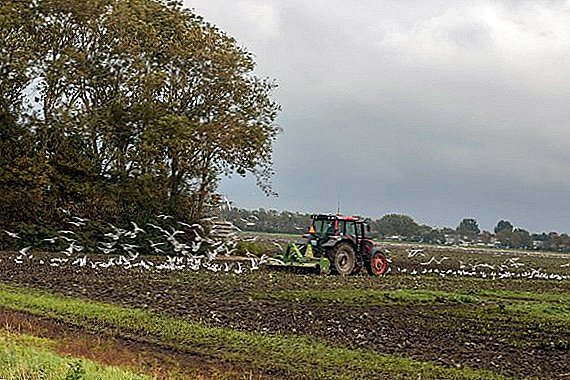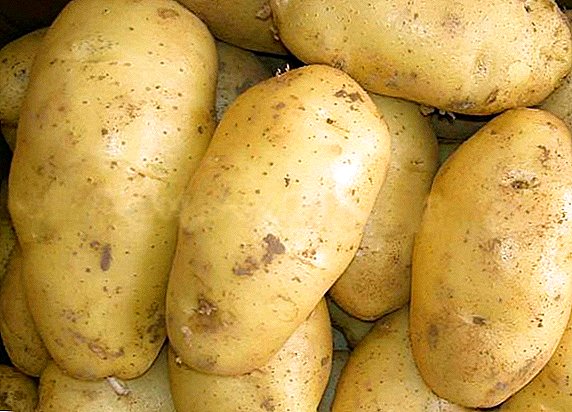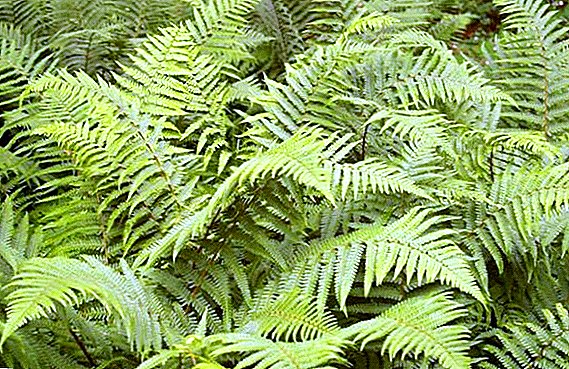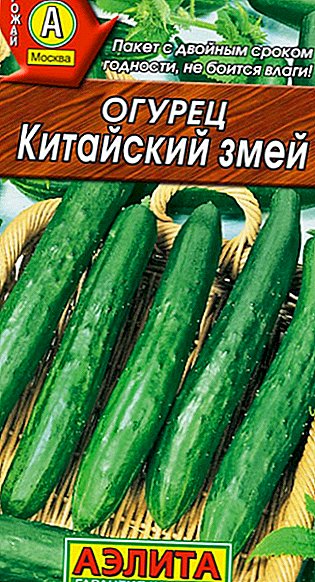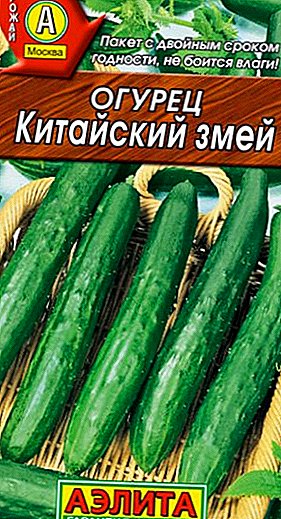 Chinese cucumbers have special taste and specific external characteristics. In this article, we consider various aspects related to planting, growing and caring for one of the most famous varieties of such cucumbers - "Chinese snakes".
Chinese cucumbers have special taste and specific external characteristics. In this article, we consider various aspects related to planting, growing and caring for one of the most famous varieties of such cucumbers - "Chinese snakes".
Variety description
The main stem of the plant can reach a height of up to 3.5 meters, gives a minimum number of side shoots, rather thin. Stems cover a huge number of leaves of dark green or light green in color, having a heart-shaped or five-lobed shape.
Did you know? In ancient Egypt, cucumbers were depicted on sacrificial tables and placed in the tombs of the pharaohs.
The root is superficially located, does not possess a pronounced central part, consists of a set of short, white, threadlike branches. The flowers from which the fruits develop are arranged singly, have a light yellow color. Each flower consists of four wedge-shaped petals, pistils and stamens are located inside. 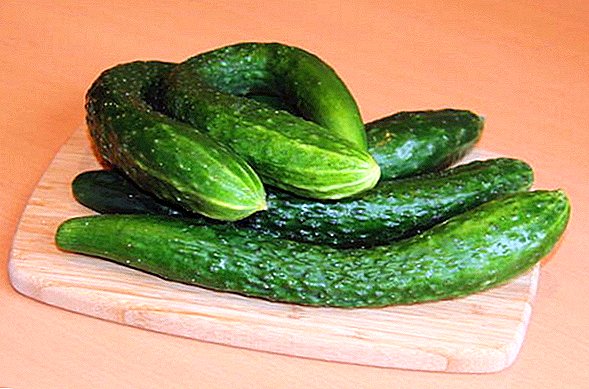
Among the advantages of this variety are the following:
- high yield;
- good organoleptic properties of fruits;
- attractive presentation;
- undemanding to lighting;
- resistance to frost;
- resistance to most "cucumber" diseases;
- fast ripening.
We recommend to get acquainted with the most unusual and exotic varieties of cucumbers.
The negative aspects of the cultivation of "Chinese snakes" should include:
- slight need for pollinating insects;
- the need for support for adequate growth and fruiting;
- seeds unfavorable germination;
- high need for feedings;
- bad keeping quality of fruits.
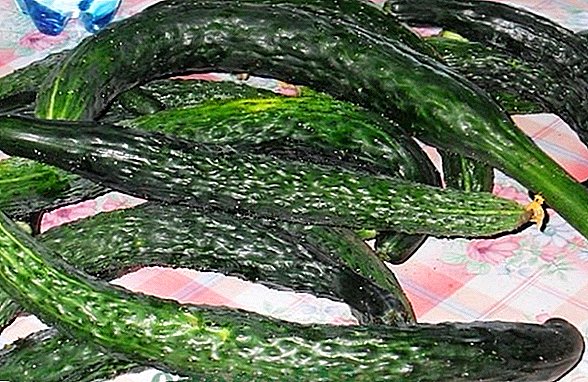
Fruit characteristics and yield
The fruits of the "Chinese snakes" have easy visibility on the background of their fellows. First of all, their size catches the eye: if cucumbers do not break in time, they can reach sizes of 85-90 centimeters. As a rule, they form a small hook by the end that is farther from the stem.
Did you know? Under the Roman emperor Tiberius, the first greenhouses for cucumbers were built, so that the ruler could feast on his favorite dish all year round.
The fruit covers a large number of pimples from which soft villi appear. On average, one cucumber variety "Chinese snakes" can reach a weight of 300-400 grams with standard sizes of 30-40 centimeters.
It should be noted that these cucumbers can be eaten fresh, pickled, pickled and sour. The organoleptic qualities of these fruits deserve the highest praise: they have a rich, refreshing taste and aroma of melon or watermelon. 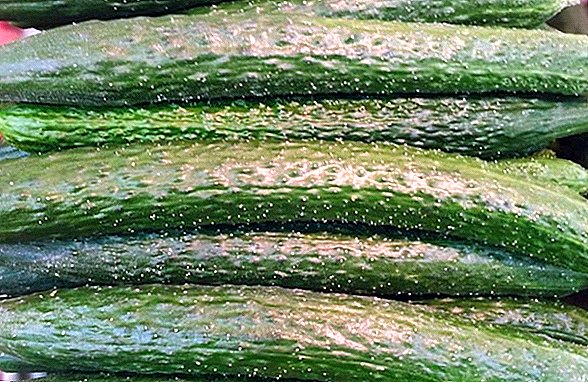 This type of cucumber has one of the highest yields for all cucumbers - up to 30 kg of fruit per season can be collected from one square meter of plantings.
This type of cucumber has one of the highest yields for all cucumbers - up to 30 kg of fruit per season can be collected from one square meter of plantings.
The ripening time of the "Chinese kites" is also striking in its performance - from the moment of formation of the ovary until the formation of a full-fledged cucumber takes only 30-35 days.
You will certainly be interested to get acquainted with the description and peculiarities of cultivation of such varieties of Chinese cucumbers, such as "Chinese disease-resistant", "Chinese farmer", "Chinese miracle", "Emerald flow".
Nevertheless, for all its merits, the fruits of the “Chinese serpents” have one unpleasant aspect - they have a rather low porosity if they are not subject to additional processing (3-5 days in the refrigerator). 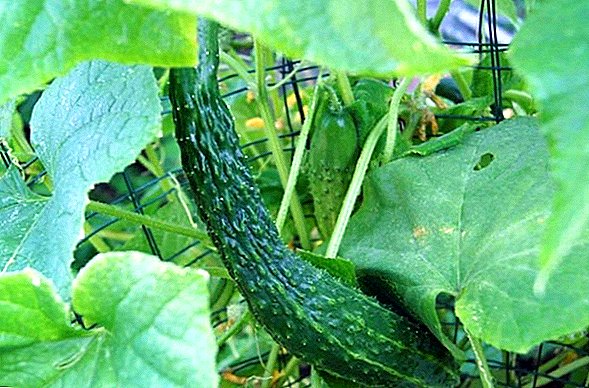
Selection of seedlings
If you get ready seedlings of cucumbers, first of all pay attention to the fact that she was not too young. In seedlings ready for transplanting into the ground there should be at least 3-4 true leaves, as well as a stem that is already 2/3 covered with hairs.
Important! It is not recommended to purchase seedlings and seeds from private sellers and in spontaneous markets, since such distributors often cannot confirm the authenticity of the variety and vouch for the quality of their goods.Carefully study the container, which contains seedlings for damage and defects of a different kind - the whole container will contribute to adequate transportation of seedlings to the landing site in open ground.
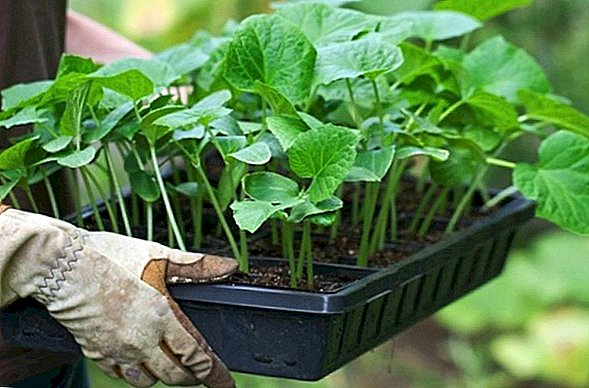 After that, it is necessary to carefully examine the leaves and stem of the plant for a variety of injuries and diseases: black, gray and brown stripes, points, torn pieces of tissue, etc.
After that, it is necessary to carefully examine the leaves and stem of the plant for a variety of injuries and diseases: black, gray and brown stripes, points, torn pieces of tissue, etc.Then it is worthwhile to dig a little the ground in which the sapling grows, in order to make sure that it is not overly wetted, since the root in this case is more likely to have a fungal infection.
Soil and fertilizer
This plant is best planted in soils rich in organic components, with an acidity close to neutral (pH 7.0-7.1).
We recommend reading about what types of soil exist, how to improve soil fertility, how to independently determine the acidity of the soil at the site, and also how to deoxidize the soil.
It is also possible to plant its seedlings in sandy and clayey soils with a high level of porosity, but in this case it will be necessary to conduct additional feeding in the form of humus, a liquid mullein, diluted 1:10 with water, or fermented bird droppings, as well as a small amount of wood ash and nitroammofoski. 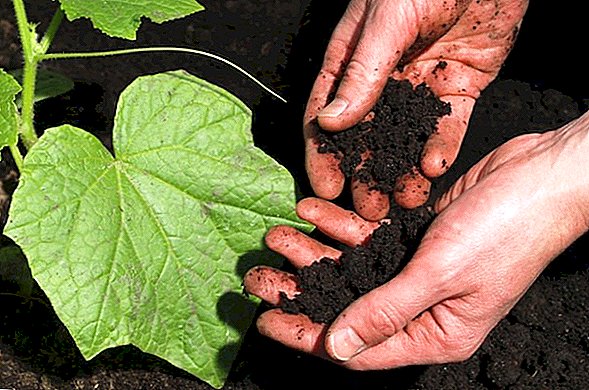 It is not recommended to plant "Chinese snakes" in those places on your site, where cucumbers or other members of the pumpkin family grew before. This is due to the fact that, firstly, parts of the roots and stems could remain in the soil, on which parasites and pathogens were probably settled, causing diseases in plants of the same family.
It is not recommended to plant "Chinese snakes" in those places on your site, where cucumbers or other members of the pumpkin family grew before. This is due to the fact that, firstly, parts of the roots and stems could remain in the soil, on which parasites and pathogens were probably settled, causing diseases in plants of the same family.
And secondly, plants of the same family consume a similar set of micro- and macroelements from the soil, equally depleting it, so the probability of obtaining impressive yields when re-planting will be much lower.
Growing conditions
This plant variety was developed especially for greenhouse conditions, which does not prevent it from being distinguished by a rather high frost resistance. The ideal daily temperature for these cucumbers is considered to be the daily average of +25 ° C, and under such temperature conditions they develop most actively and bring the greatest yields. 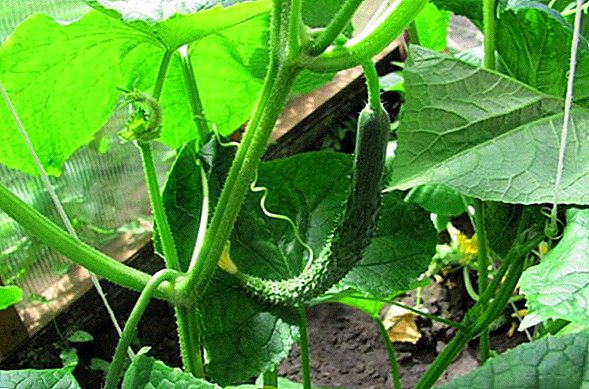 The presence of a permanent source of light is not a prerequisite for the adequate development of "Chinese snakes", in the shade they show quite acceptable yields.
The presence of a permanent source of light is not a prerequisite for the adequate development of "Chinese snakes", in the shade they show quite acceptable yields.
Cucumbers of this variety like humidity, so it is necessary to provide for them a drip irrigation system or place them in a place with superficially situated groundwater.
Important! It is recommended to choose for planting places that are in the lowlands of your site. The greatest amount of water is collected there, and it will be possible to water the seedlings a little less.
Saplings can easily tolerate the effects of drafts and even squally winds, but as they mature, their resistance to this environmental factor drops significantly. In this regard, it is recommended to plant seedlings of this variety in places inaccessible to the wind. 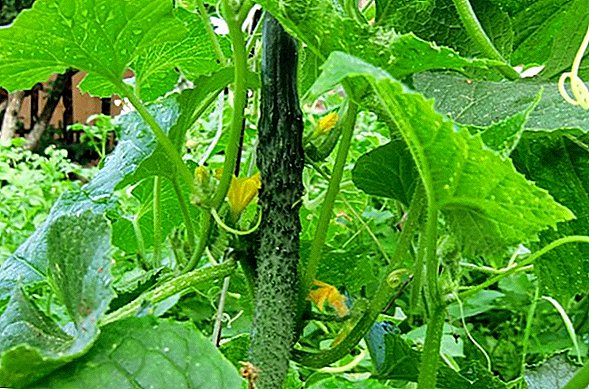
Growing from seed to seedlings at home
The general technology of growing cucumber seedlings of this variety is not much different from the similar process for other plant species, but it still has its subtleties.
It will be useful for you to read about when the best time for planting cucumbers for seedlings, as well as how to plant cucumbers for seedlings.
Seed preparation
Here is the process of preparing seeds for planting them on seedlings:
- Gently evenly spread the seeds on canvas or gauze.
- Etch them with a fungicide or pesticide (thiabendazole, Bordeaux liquid, formalin, etc.).
- Allow the seeds to dry for 1.5-2 hours.
- Place the seeds in a glass of water, separate and discard those that remain floating on the surface.
- Slightly rub the remaining seeds with gauze - and you can start sowing.
Content and location
It is best to grow seedlings first in a common oblong box or box, and then, after most of the young plants turn and give up their first real leaf, each plant can be transplanted into a separate small container (200-400 ml cup).
Did you know? Prickles on cucumbers are necessary for excess moisture to come out of the fruit. That is why in the morning they are so wet.
It is best to keep the seedlings warm, but a large amount of light is required. It does not matter whether it is solar or from a UV lamp, but the length of daylight for normal seedling formation should be 10-12 hours. 
Seed planting process
The process of planting seeds for seedlings is approximately as follows:
- Drainage material in the form of broken bricks, sand, peat, pebbles or rubble is placed in an oblong box.
- On top of the drainage material poured a layer of fertile soil.
- Pencil held the furrow depth of 1-1.5 centimeters at a distance of 10-15 centimeters from each other.
- Seeds are evenly applied to the furrows and sprinkled on top of the soil.
- The soil is poured with a small amount of water so as to soak 3-4 centimeters of its upper layer.
Learn more about what types of lamps are suitable for lighting seedlings, as well as how to make the backlight for seedlings at home.
- Cover the box tightly with glass or plastic bag and place it on a window or under a UV lamp.
Seedling care
Caring for future cucumbers is to constantly check the humidity in the box (pick up the ground with your finger or pencil 3-4 centimeters deep and look at the result), add water if the situation requires it, and regulate the length of daylight.
After the appearance of the first green shoots, you can remove the glass or plastic bag from the drawer and wait until the first real sheets start to appear - this is a signal that it is time to begin transplanting the seedlings into separate containers.
Important! Try to arrange for the sprouts box as large as possible, it will contribute to an adequate and faster development.
When 2-3 true leaves appear on the seedlings, and the air temperature outside the window rises to +10 ° C, you can begin the hardening process. 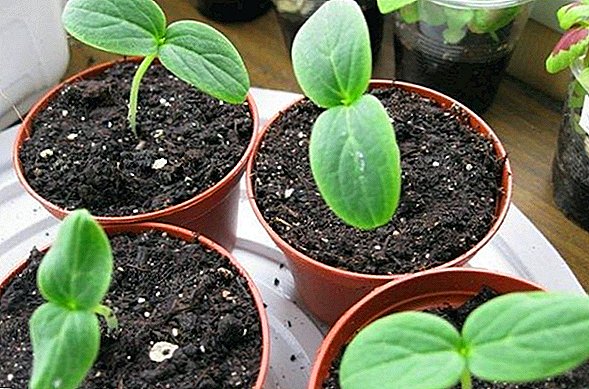 To do this, it is recommended to take out containers with seedlings for fresh air, for example, to a balcony or to an open window, first for 10-15 minutes every day, and then gradually increasing this period of time.
To do this, it is recommended to take out containers with seedlings for fresh air, for example, to a balcony or to an open window, first for 10-15 minutes every day, and then gradually increasing this period of time.
So you get young plants that will be easier to endure all adverse environmental conditions and rooted with much greater success.
Transplantation in open ground
It makes sense to start transplanting seedlings into open ground only when the average daily temperature has passed the mark of + 19 ... +22 ° C, otherwise the "Chinese snakes" will hardly be used to grow.
Video: planting cucumber seedlings in open ground The best time to start this operation is the end of May and the beginning of June. Planting plants recommended in a checkerboard pattern, preferably not thicker than 3 plants per 1 square. meter.
Here is the transplanting scheme:
- A hole 15x15 cm in size and 20 cm deep is excavated.
- A small amount of sand or peat is introduced into the hole. Then - a little mullein, diluted with water 1, 10 or bird droppings, as well as 2 tablespoons of wood ash and 4-5 grams of nitroammofoski.
- The young plant is taken out of the tank together with the earthy clod and placed in the pit.
- Powdered with earth so that the native earthy clod and stem of the plant rise above the general level of the ground by 0.5-1 cm.
- The plant is watered abundantly, and the tree trunk is mulched using peat, freshly cut grass or hay.
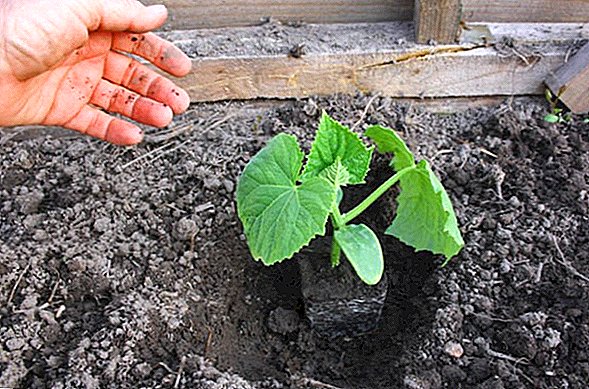
Agrotechnics growing seeds in open ground
Planting seeds immediately in open ground is a risky exercise, primarily because of the already noted low and non-friendly germination. However, many experienced gardeners successfully apply this technique.
Read more about when to plant cucumbers in open ground.
Outdoor conditions
The main thing that should be taken into account is that plants need protection from the wind, so you need to choose the most windless area, but at the same time you need to remember the need for pollination, in which a light breeze will be most welcome.
The process of planting seeds in the ground
In general, the process of planting seeds directly into the ground differs little from the process of planting seeds for seedlings, except on a larger scale and without the use of boxes and other containers.
Video: planting cucumbers in open ground Therefore, once again to describe it to you does not make much sense. It is best to start this procedure in mid-May, practice shows that such periods allow for maximum germination.
Important! Under greenhouse conditions, planting seeds in open ground can be carried out another 2-3 weeks earlier. That is, in late April and early May.
Watering
"Chinese kites" must be watered as often as possible, preferably even every day. Initially, the plants are watered at the rate of 1 liter of water for each bush, gradually increasing the rate to 7-10 liters with the growth of the plants themselves. Water temperature during watering should be the same as the ambient temperature.
In dry weather, these cucumbers are recommended to be watered twice a day, once before sunrise, and a second time towards evening, when the peak of solar activity passes.  Care should be taken to ensure that water does not fall on the stems and leaves of the plant, as this may cause irreparable injuries to it, especially when exposed to sunlight. In rainy weather, there is no particular need for watering.
Care should be taken to ensure that water does not fall on the stems and leaves of the plant, as this may cause irreparable injuries to it, especially when exposed to sunlight. In rainy weather, there is no particular need for watering.
Learn how to water cucumbers in a greenhouse and open field.
Soil loosening and weeding
Loosening is necessary in order to saturate the roots of cucumbers with oxygen. It is only necessary to remember that the depth of loosening should not exceed 4-5 centimeters, otherwise there is a very high probability to damage the roots of the bushes.
Weeding allows you to get rid of weeds. It is best to perform both weeding and loosening the soil immediately after watering or after it has rained — this will greatly facilitate these procedures. The frequency of both procedures should be 2-3 times a month. 
Masking
Despite the fact that this type of cucumber practically does not give side shoots, sometimes it still has to stepchild, so that the secondary stems do not take nutrients from the main shoot and do not prevent it from growing upwards.
Important! In the process of staving try not to damage the antennae, which the main stem clings to the support. This may cause the plant to fall to the ground and wither.
As a rule, there are practically no ovaries on the side shoots, and they pull a lot of vegetative mass onto themselves, so they must be removed.
In order to correctly remove the side shoot, it is necessary to accurately find a place on the main stem, from which it departs.
Video: pickling cucumbers After that, take a sharp knife or pruner and cut the secondary shoot at a distance of 3-5 centimeters from the main at an angle of 30-40 °.
We advise you to read about when and how to stick cucumbers.
Garter
For normal growth and adequate fruiting, it is necessary to place adequate supports next to these bushes to which the stem can be fixed. To do this, it is necessary to install vertical supports around the perimeter of the landing of the "Chinese kites", 1.8-2 meters high with a transition to a horizontal level after the specified height.
5 days after transplantation of seedlings into the open ground, the first fixation of young plants to the supports is carried out, then the plant must braid the supports independently.
Top dressing
Over the entire growing season, it is recommended to perform about 2-3 fertilizing with the help of complex mineral fertilizers and 1-2 fertilizing with organic fertilizers. 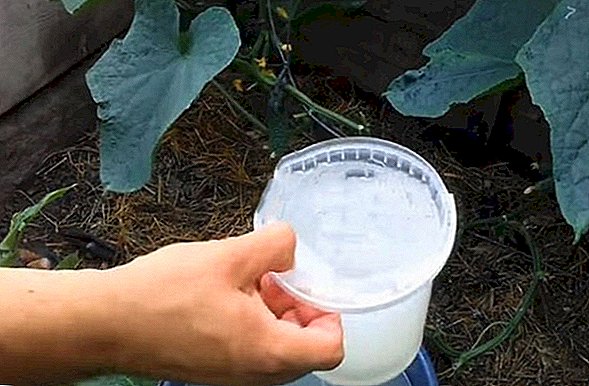 The first top dressing (obligatory) should be carried out with mineral fertilizers, for example, nitroammophoska or ammonium nitrate at the rate of 10-12 grams per each shrub approximately 1-1.5 weeks after planting.
The first top dressing (obligatory) should be carried out with mineral fertilizers, for example, nitroammophoska or ammonium nitrate at the rate of 10-12 grams per each shrub approximately 1-1.5 weeks after planting.
You probably will be interested to read about how to feed cucumbers during flowering and fruiting.
Then alternate fertilizing with mineral fertilizers with organic fertilizing, for example, fermented bird manure, fermented grass extract or diluted 1:10 with liquid mullein. The total number of feedings and the need for them, calculate based on the general condition of the plant and the rate of its development.
Pests, diseases and prevention
Properly rooted and healthy "Chinese snakes" are not afraid of most fungal diseases that affect plants from the pumpkin family. However, there is a pathology that can even hit this cucumber - it is rust. 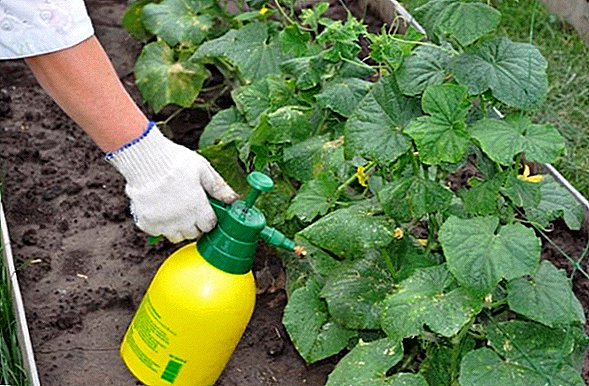 In order to protect your crop from death, carefully examine the bushes for the appearance of any kind of rust spots and other marks. When such manifestations are detected, it is necessary to immediately cut off the affected area and burn it, and treat the remaining plant with mustard powder or Bordeaux mixture.
In order to protect your crop from death, carefully examine the bushes for the appearance of any kind of rust spots and other marks. When such manifestations are detected, it is necessary to immediately cut off the affected area and burn it, and treat the remaining plant with mustard powder or Bordeaux mixture.
Of the pests for the hero of our article, the most likely and dangerous collision with aphids, spider mites and gall nematodes.In order to combat these pests, it is recommended to treat the plants with a solution of any insecticide ("Fitoverm", "Aktellik").
In order to prevent the occurrence of diseases in plantations of young cucumbers, as already mentioned, they try not to plant them in the places where the plants from the pumpkin family grew before.
Video: preparations for the treatment of cucumbers from diseases and pests Dill and leaf mustard are also planted next to them, they should be dug up the ground before the cold so that the parasites die under the influence of low temperatures and are treated with fungicide and insecticide solutions after planting the seedlings in the open ground, as well as during growth.
Harvesting and storage
It is best to harvest the crop as the need arises, since it will not be possible to keep these vegetables for the future because of the low storage capacity mentioned above. Preference in the collection is better to give the fruits that grow lower.
Important! To increase the shelf life of cucumbers, it is recommended to tear them off with a small portion of the stem extending from the stem.
Before eating, cucumbers must be washed, and it is also advisable to cut the skin off of them, since it can in some cases give a slightly bitter taste. 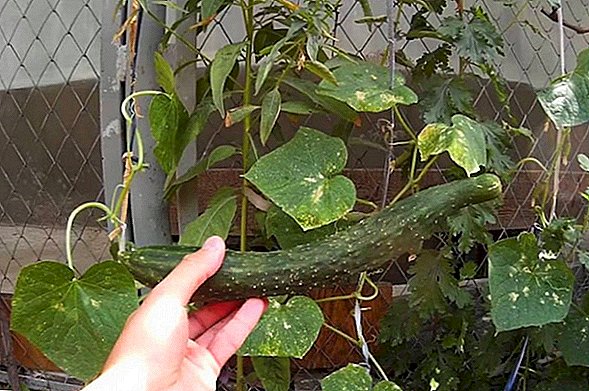 Cucumbers can lie fresh for an extremely short period, so it is recommended that they be eaten as soon as possible or made into blanks.
Cucumbers can lie fresh for an extremely short period, so it is recommended that they be eaten as soon as possible or made into blanks.
Possible problems and recommendations
Leaves may fall off during the active growing season. In the event that the plant has a healthy appearance and continues to gain vegetative mass, do not panic, this is one of the normal variants.
Carefully ensure that the leaves and the stem of the plant do not get fertilizer in the process of applying top dressings, as this is fraught with a chemical burn and the subsequent death of the plant.
Fruits often fall off due to an insufficient amount of moisture or minerals in the soil, so the first thing to check is how well you watered cucumbers, picking up the ground in the area of the tree circle, or crushing an earthen ball in your palm. 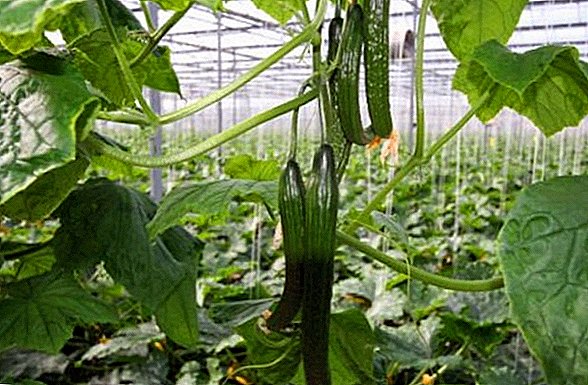 If this is not the problem, you can safely begin to make the following mineral dressing. Sometimes it happens that the plant can not be pollinated due to the complete absence of wind or insect pollinators within reach.
If this is not the problem, you can safely begin to make the following mineral dressing. Sometimes it happens that the plant can not be pollinated due to the complete absence of wind or insect pollinators within reach.
Therefore, if fruits do not appear on your bushes, first try to gently transfer the pollen from flower to flower with a brush or try to organize a draft that would blow on them.
Summarizing, we can say that the "Chinese snakes" - a great variety of cucumbers for growing at home, which is able to satisfy with its qualitative and quantitative indicators of even the most sophisticated gardener.
Let you not be afraid of possible problems associated with the process of growing these plants, because the benefit derived from their growth is definitely worth it! 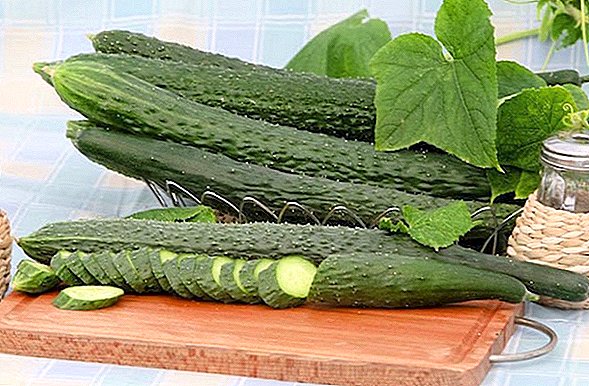
Reviews from the network




